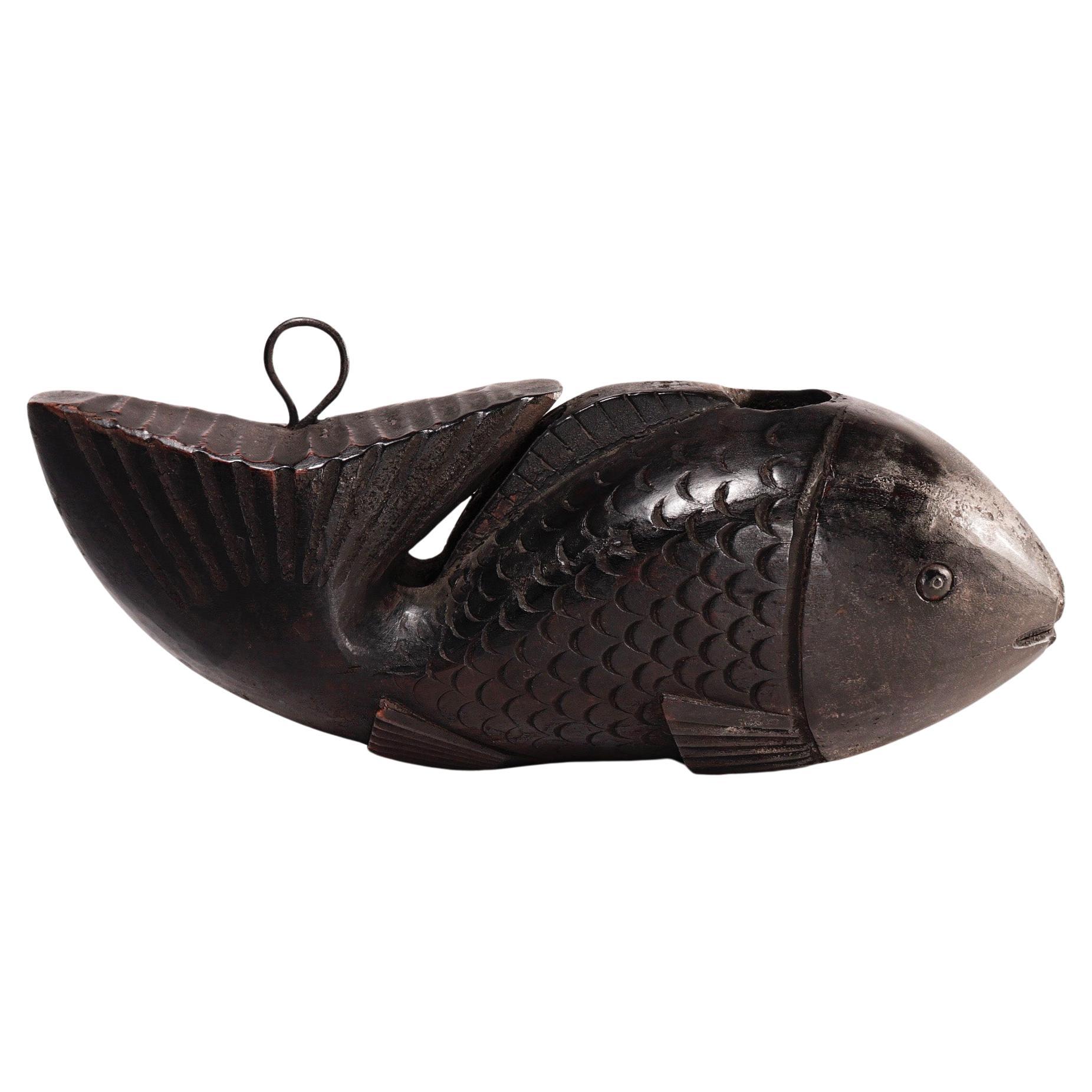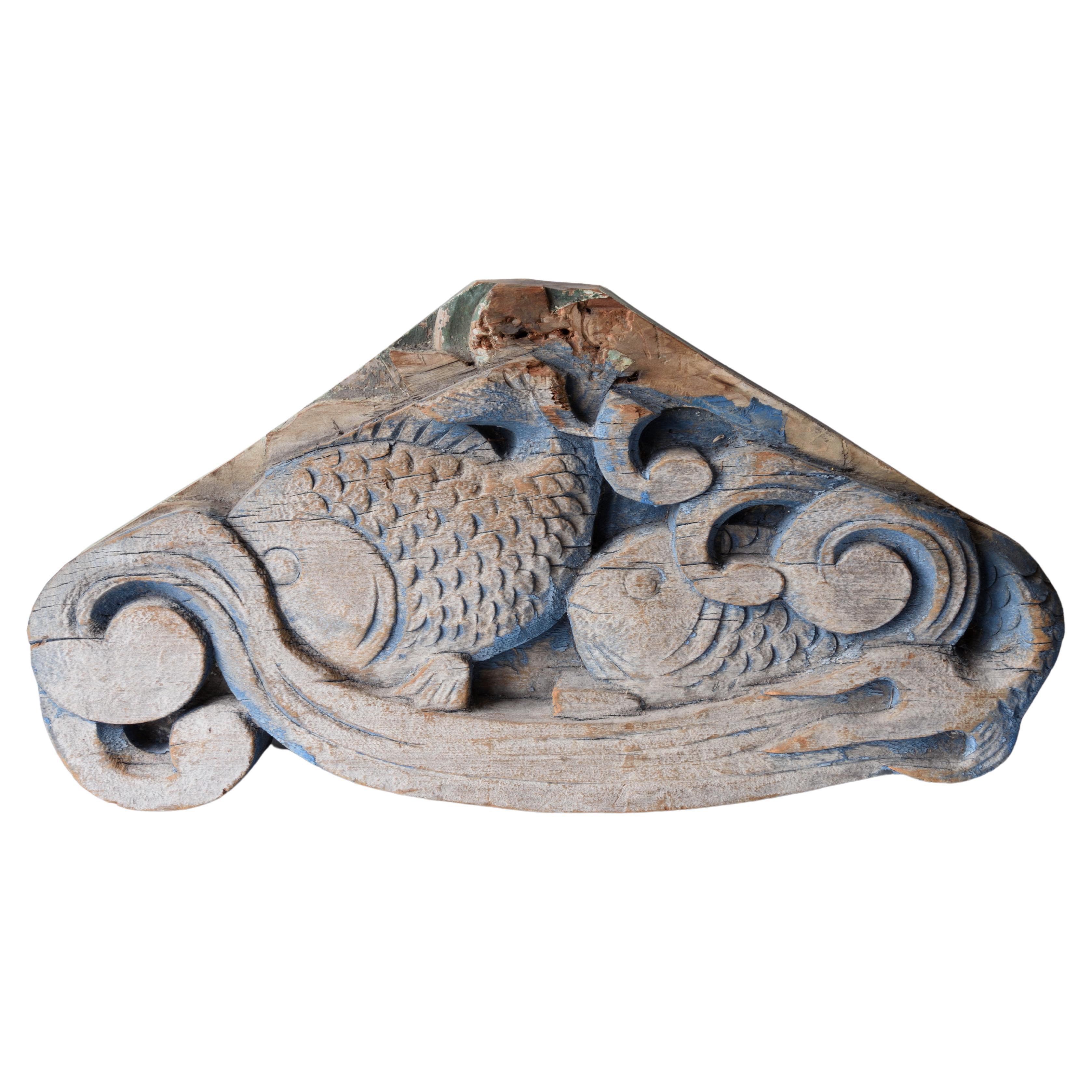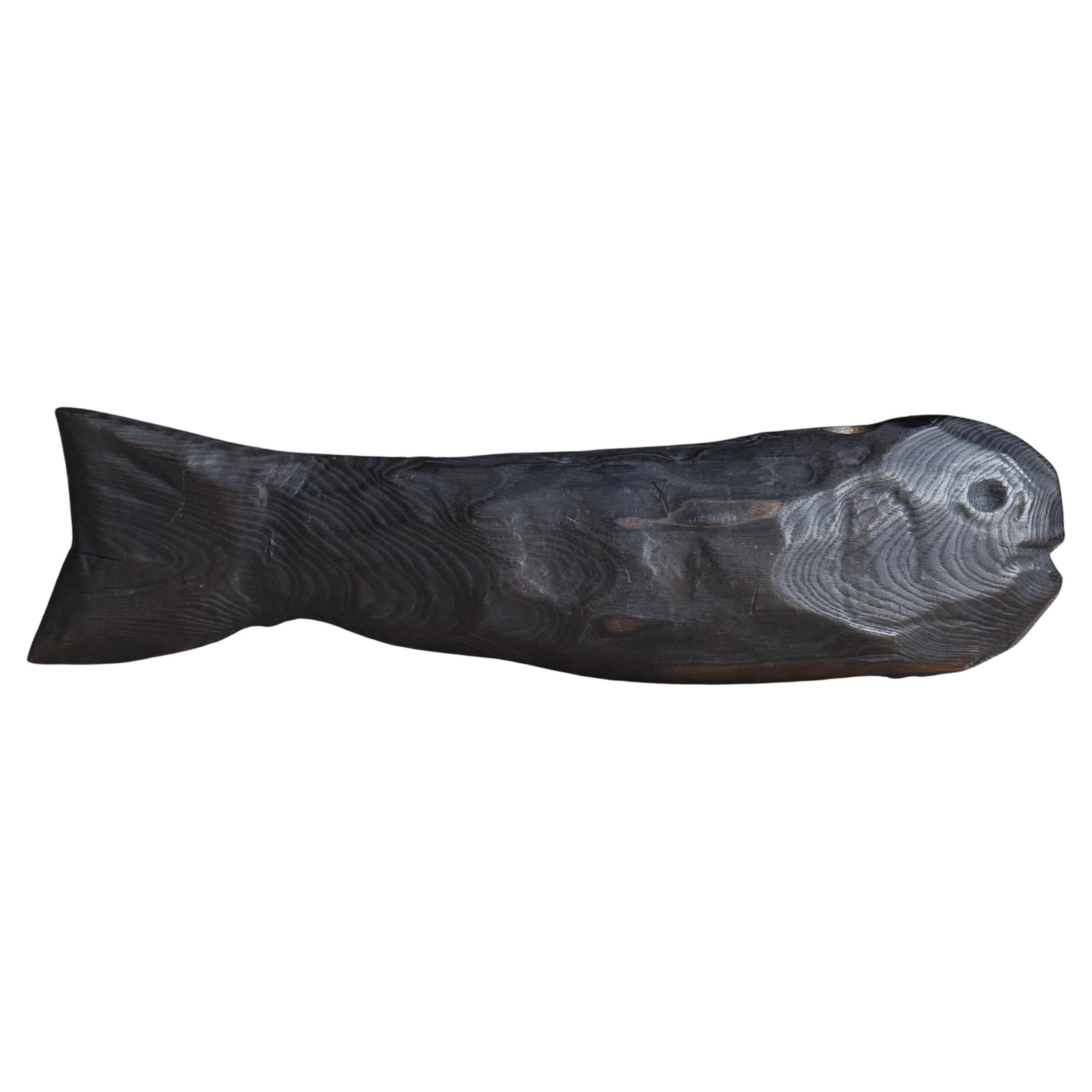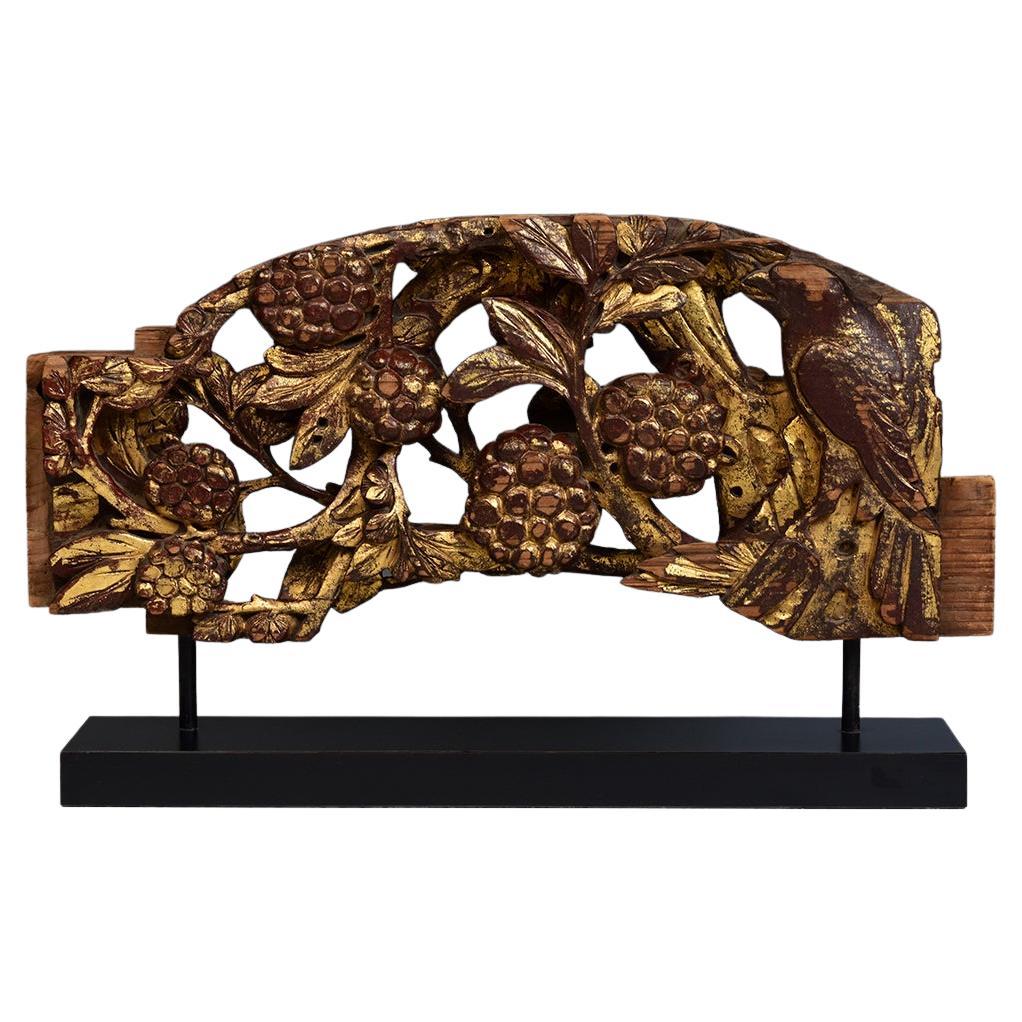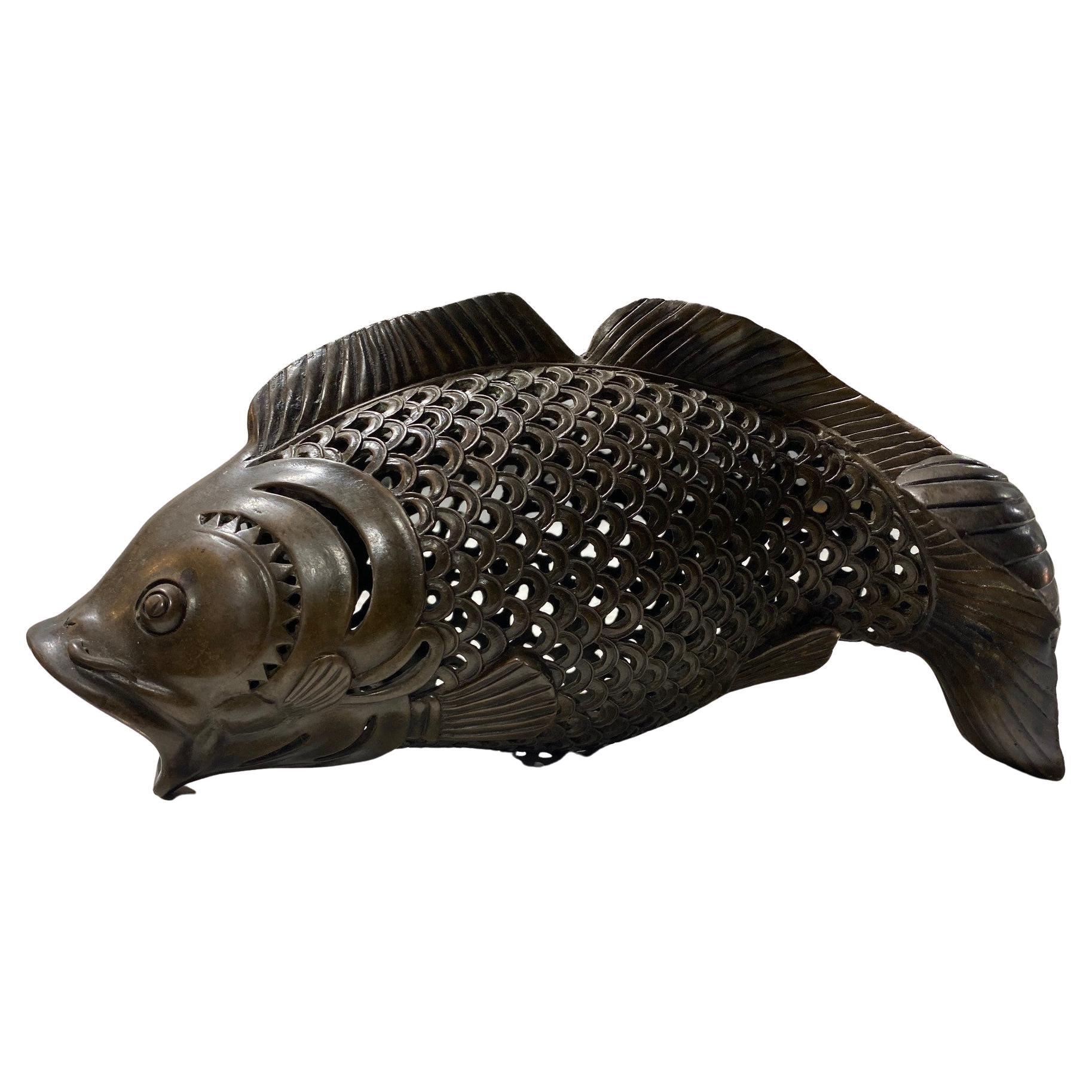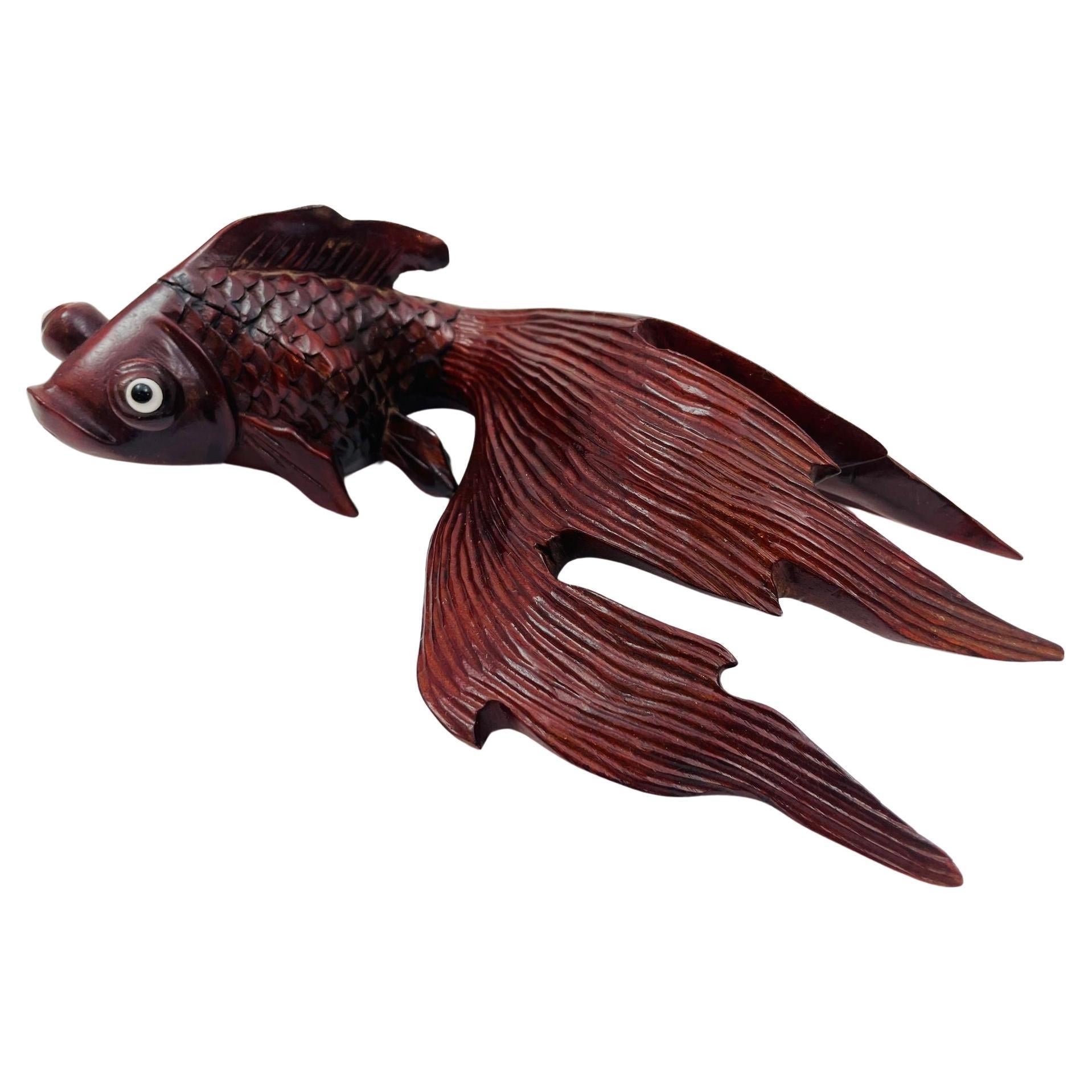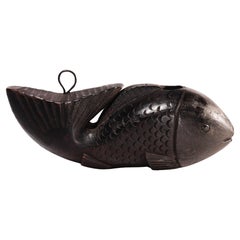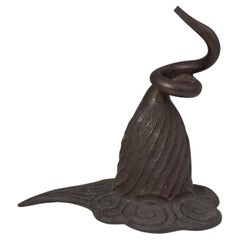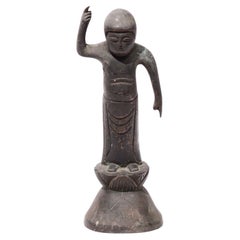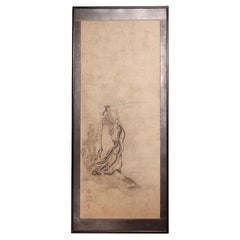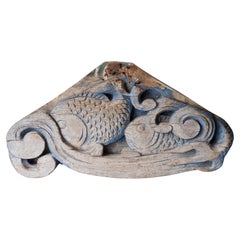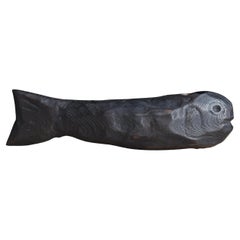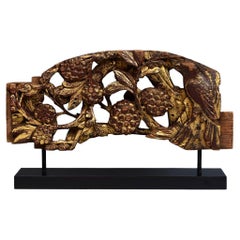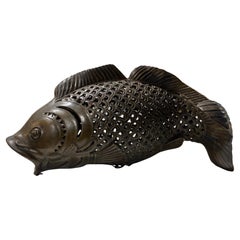Items Similar to Jizai Koi and Water Motif, Japan, Miji Period
Want more images or videos?
Request additional images or videos from the seller
1 of 6
Jizai Koi and Water Motif, Japan, Miji Period
$1,975
£1,498.58
€1,713.50
CA$2,758.54
A$3,067.12
CHF 1,601.48
MX$37,334.33
NOK 20,434.20
SEK 19,145.87
DKK 12,788.15
Shipping
Retrieving quote...The 1stDibs Promise:
Authenticity Guarantee,
Money-Back Guarantee,
24-Hour Cancellation
About the Item
This jizai is an excellent example of a well-balanced and pleasingly carved sculpture of koi swimming in waves. Once part of a Japanese hanger (jizagake) for a kettle hook, it served as an adjuster (yokogi) on the mechanism.
In Japan, koi symbolize many desirable traits resulting from their habit of swimming upstream. Koi, known as carp in the Western world, are emblems of strength, perseverance, and tenacity, among others. Images of koi are popular and used in a similar manner as Buddha’s and deities, as a reminder to live an ideal life.
A classic Japanese art object.
Mounted on a custom steel base with bronze patina and brass inlays.Height on custom display stand: 5 in. / 12.5 cm
- Dimensions:Height: 3.5 in (8.89 cm)Width: 9.5 in (24.13 cm)Depth: 2 in (5.08 cm)
- Style:Meiji (Of the Period)
- Materials and Techniques:
- Place of Origin:
- Period:
- Date of Manufacture:1868 - 1912
- Condition:Wear consistent with age and use.
- Seller Location:Point Richmond, CA
- Reference Number:Seller: MOG#14TG1stDibs: LU1778231257062
About the Seller
5.0
Platinum Seller
Premium sellers with a 4.7+ rating and 24-hour response times
Established in 1999
1stDibs seller since 2015
686 sales on 1stDibs
Typical response time: 2 hours
- ShippingRetrieving quote...Shipping from: San Francisco, CA
- Return Policy
Authenticity Guarantee
In the unlikely event there’s an issue with an item’s authenticity, contact us within 1 year for a full refund. DetailsMoney-Back Guarantee
If your item is not as described, is damaged in transit, or does not arrive, contact us within 7 days for a full refund. Details24-Hour Cancellation
You have a 24-hour grace period in which to reconsider your purchase, with no questions asked.Vetted Professional Sellers
Our world-class sellers must adhere to strict standards for service and quality, maintaining the integrity of our listings.Price-Match Guarantee
If you find that a seller listed the same item for a lower price elsewhere, we’ll match it.Trusted Global Delivery
Our best-in-class carrier network provides specialized shipping options worldwide, including custom delivery.More From This Seller
View AllAntique Japanese Mingei Yokogi
Located in Point Richmond, CA
Antique Japanese Yokogi, a fish shaped fulcrum for the pot hook assembly over the hearth, a naively carved Tai (Sea Bream) with large head pierced for the hooked pole and the large tail pointed upward with a metal loop for the cord attachment, incised carving for facial details and scales, encrusted patina from use. Wood storage box made of hinoki.
Excellent condition.
5-7/8 in. high x 14-3/4 in. long x 4 in. wide.
Weight: 4 lbs. 4 oz.
Late Edo, Circa 1800.
Published in a Japanese newspaper in 1964 (article and translation available).
Provenance:
with Kingo Kondo, Kyoto 1964
Ken Domon...
Category
Antique Early 1800s Japanese Edo Sculptures and Carvings
Materials
Wood
20th Century Abstract Iron Sculpture, Japan
Located in Point Richmond, CA
20th Century Hollow Abstract Iron Sculpture, Japan
This heavy hollow iron sculpture by an unknown Japanese metalsmith is a knockout from every angle. It measure 9 inches high by 9 i...
Category
Mid-20th Century Japanese Japonisme Sculptures and Carvings
Materials
Iron
Japanese bronze image of Tanjo no Shaka
Located in Point Richmond, CA
Japanese bronze image of Tanjo no Shaka, the infant Buddha (Shakyamuni), a standing figure with the right hand pointing towards heaven and the left hand pointing toward earth, costum...
Category
Antique 1850s Japanese Edo Metalwork
Materials
Bronze
Antique Japanese Suibokuga Sage by Kano Tokinobu, 17th century.
Located in Point Richmond, CA
Antique Japanese Suibokuga Sage Painting by Kano Tokinobu, 17th century. A sumi-e ink on paper painting illustrating an acolyte at a riverbank. The image of the standing Chinese figure with elongated earlobes (a symbol of enlightenment), hair tied back in a kerchief and long beard, holds a large fan in his left hand to his right shoulder. The long robes are windswept with water curls about the figures feet. The painting with 3 vermillion seals of the artist in the lower left corner. Japanese dry mount paper on a wood frame with thin brocade border silver leafed surround and lacquered wood outer frame.
Condition: Paper restoration on center, a quarter of an inch of the left edge of the painting is added, other minor signs of age, wear, stains and repairs overall fine condition.
Age: Painting Edo Period, circa 1670. Mounting circa 1985.
Image: 51-1/2 in. x 20-1/2 in. (131cm x 52cm)
Frame: 59-1/4 in. x 25-1/4 in. (150cm x 64cm)
Weight: 6lbs.
Provenance:
with Honeychurch Antiques...
Category
Antique 1670s Japanese Edo Paintings and Screens
Materials
Paper
Antique Japanese Dai
Located in Point Richmond, CA
Antique Japanese Dai, a display stand used in the tokonoma, a large section of root burl possibly Sugi (Cryptomeria japonica), a beautiful golden color wo...
Category
Early 20th Century Japanese Organic Modern Furniture
Materials
Burl
$1,500
Antique Japanese Yosegi (Marquetry) Shibayama Ko Tansu Meiji Period
Located in Point Richmond, CA
Antique Japanese Yosegi (Marquetry) Shibayama Ko Tansu, Meiji period
The marquetry is composed of keyayaki (zelkova) and kakinoki (persimmon) wood. Two small doors with inlaid Moth...
Category
Antique Late 19th Century Japanese Meiji Furniture
Materials
Wood, Mother-of-Pearl, Lacquer
You May Also Like
19th century Japanese Wood Carving Temple Shrine Sea Breams and Wave Decoration
Located in Chiba, JP
SEA BREAMS AND WAVES – Wood carving decoration with the remains of original bule paint as the actual fragment of a certain Japanese temple/shrine construction, Edo-Meiji period, 19th...
Category
Antique Late 19th Century Japanese Japonisme Antiquities
Materials
Wood
Japanese Antique Wood Carving Fish 1860s-1900s / Figurine Object Wabisabi
Located in Chōsei District Nagara, JP
This is an old carved wooden fish made in Japan.
It was made during the Meiji period (1860s-1900s) and was carefully carved one by one using chestnut wood. The annual ring pattern th...
Category
Early 20th Century Japanese Meiji Sculptures and Carvings
Materials
Chestnut
19th Century, Antique Chinese Wood Carving with Stand
Located in Sampantawong, TH
Chinese wood carving with stand
Age: China, 19th Century
Size: Height 22.5 / Width 50.8 C.M. / Thickness 5.7 C.M.
Size including stand: Height...
Category
Antique 19th Century Chinese Antiquities
Materials
Wood
$760 Sale Price
20% Off
Japanese Asian Showa Period Bronze Koi Carp Fish Sculpture
Located in Studio City, CA
A beautiful Japanese bronze koi fish sculpture with wonderful mesh craftsmanship and a glowing patina.
This piece may have initially been made to u...
Category
20th Century Japanese Showa Sculptures and Carvings
Materials
Bronze
Japanese Hand Carved Wood Koi Fish Sculpture 1920
Located in North Hollywood, CA
Japanese Hand Carved Wood Koi Fish.
Small Hand Carved Wood Japanese Koi Fish Sculpture.
Antique hand carved wooden Asian Koi fish "goldfish" with gl...
Category
Vintage 1920s Japanese Anglo-Japanese Animal Sculptures
Materials
Wood
Japanese Found Wood Scholar’s Object
Located in Bridgeport, CT
A dramatic and beautifully timeworn Japanese Wood Sculpture in vaguely anthropomorphic form balanced on five points and fashioned from a particula...
Category
Early 20th Century Japanese Edo Sculptures and Carvings
Materials
Wood
$2,250 / set
More Ways To Browse
Antique Water Stand
Japanese Displays Stands
Antique Japanese Wood Carvings
Japanese Buddha
Japanese Meiji Carving
Meiji Bronze Sculptures
Japanese Buddha Sculpture
Carved Wood Deity
Japanese Koi
19th Century Japanese Wood Carving
Antique Wood Hangers
Meiji Wood Sculpture
Antique Kettle Stand
Wood Buddhas
Koi Sculpture
Wood Koi
Brass Kettle
Adjustable Sculpture Stand
